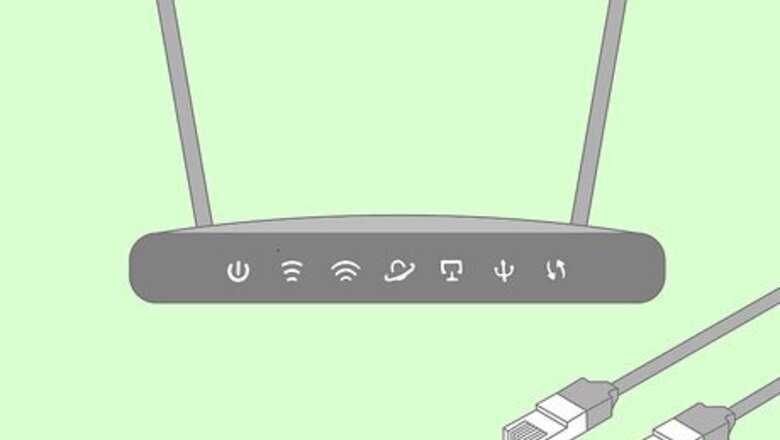
views
- You can connect multiple computers together to share files or internet access.
- Use Windows’ built-in wireless networking feature to share files, folders, and drives.
- Use an Ad-hoc network if you want to share internet access from one computer to another.
Setting Up a Wireless Computer Network
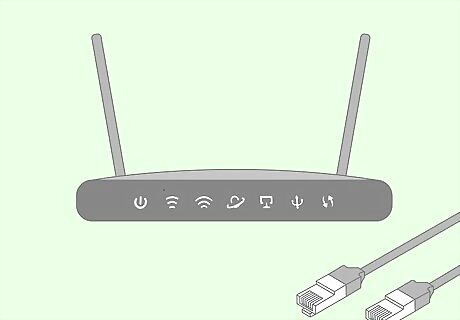
Obtain the necessary equipment to create a computer network. In order to set up a wireless network, you will need internet service, a modem, and a wireless router, or a combination router/modem device which is called a gateway. You may also need 2 or 3 ethernet cables.
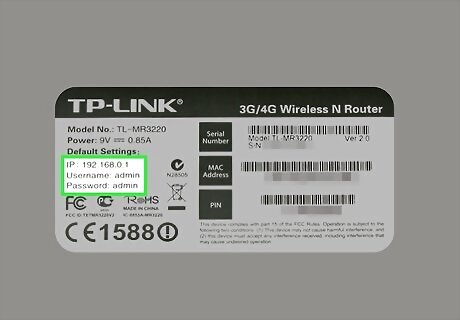
Obtain the router's default username, password, and IP address. You'll need this information to log in to your router's user interface. This information can be found in the User's manual for the router, or the manufacturer's web page. Refer to our guides for finding your router’s IP address and router password for more info. You can also change the router password if needed.
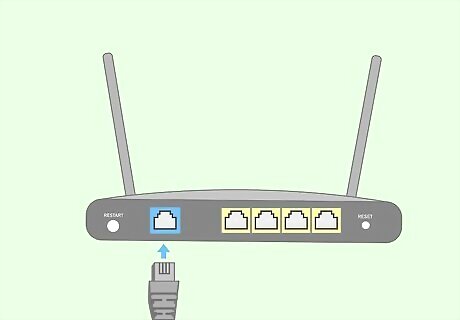
Connect the modem to a live internet connection. Your internet service provider will need to install an internet connection at your home or business for you to access the internet. The type of internet connection that's available depends on your location. The 3 main types of high-speed internet services are cable, DSL, and fiber optic: Cable: Cable uses the existing cable television infrastructure to provide cable internet. Connect the coaxial cable that your cable internet service provider installed to the coaxial input on the back of the cable modem or gateway. DSL: DSL uses existing phone lines to provide high-speed internet. A DSL modem connects to the internet using a standard phone line. Connect a phone line from a phone jack to the DSL line on the back of the modem. Fiber optic: Fiber optic internet is the newest and fastest form of high-speed internet. The infrastructure for fiber optic is not available in all areas. Depending on how the service is installed at your home or business, a fiber optic cable may be installed by your internet service provider which you can connect directly to the modem, or it may be connected to a media converter which then connects to your modem or gateway device using an ethernet cable. Connect the ethernet cable to the internet or WAN port on the back of your router or gateway device.
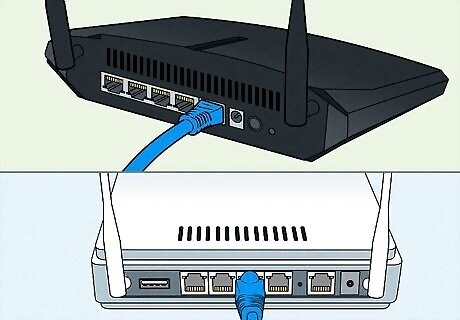
Connect the wireless router to the modem. Connect one end of an ethernet cable to the back of the modem. Then connect the other end of the ethernet cable into the internet or WAN port on the back of the wireless router. For more information, check out our guides on setting up Wi-Fi and extending a wireless network. If you are using a combination router and modem gateway device, you do not need to connect it to any other routers. Make sure both your modem and router are plugged in using the AC adapter that came with them.
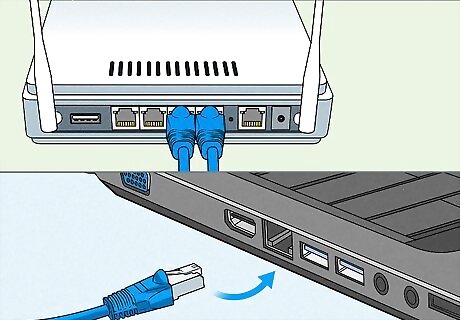
Connect a computer to the wireless router. Use an ethernet cable to connect a computer or laptop to a LAN port on the router. Plug in the power source for the modem, then plug in the power source for the wireless router. Wait a few moments for the devices to boot up.
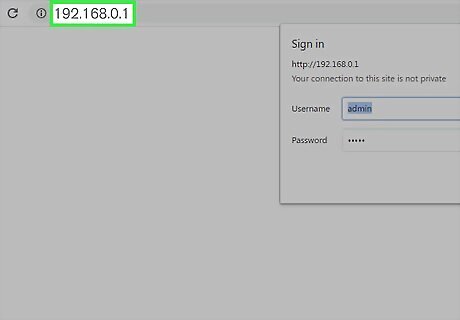
Enter the router's default IP address in the address bar of a web browser. This opens the login page for the router's user interface. Check the user's manual that came with the router, or manufacturer's web page to find the default IP address. Common IP addresses include 192.168.0.1, and 10.0.0.1
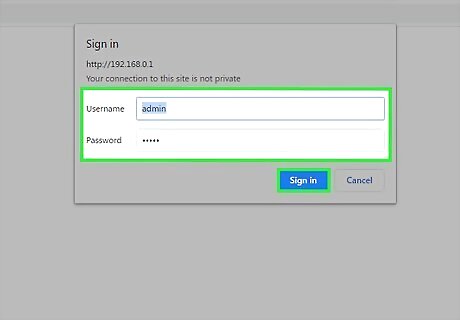
Log in to the router's user interface. Use the default username and password to log in to the user interface. Consult the user's manual or manufacturer's web page to find the default username and password. Common usernames and password are "admin", "password", "12345", or leaving the field blank. You can also typically find the router’s default admin username and password on Google by searching for the router model + “admin username” or “admin password.”
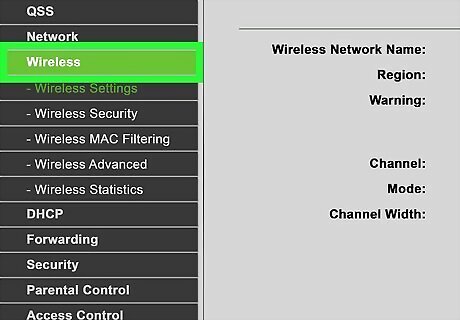
Locate the Wireless SSID name and password section. Each router model has a different user interface. You may find the SSID and password field in a menu labeled "Wireless", "Wi-Fi", or "Wireless Network."
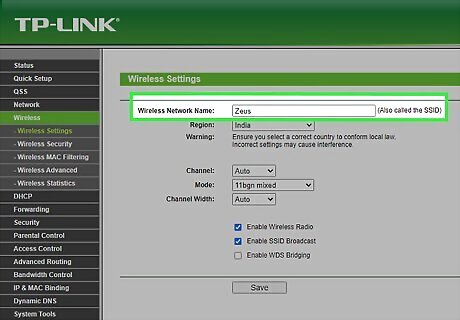
Create a name for the network. The SSID is the name of the network that you and your guests will use to log in to your Wi-Fi network. Enter the name you want to use as the SSID in the SSID field.
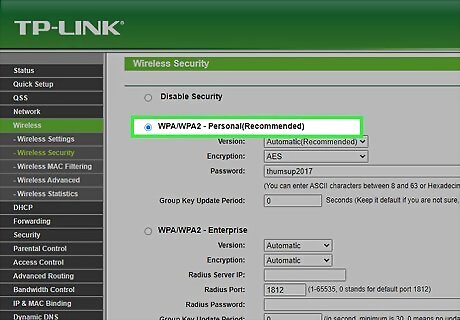
Select a security mode for the network. The options typically will be limited to "none," "WEP", "WPA", "WPA 2." WPA 2 is the option most often recommended because it offers stronger encryption and therefore greater security than WPA.
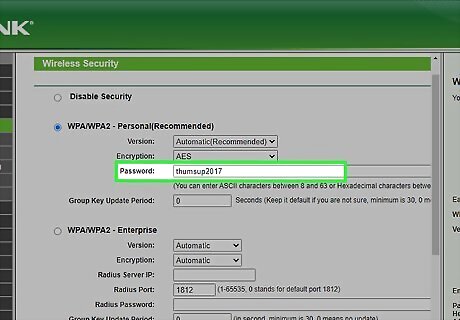
Enter the password. Enter a password in the field that says "Password", "Network key", or something similar. This is the password that you and guests will use to log in to the network.
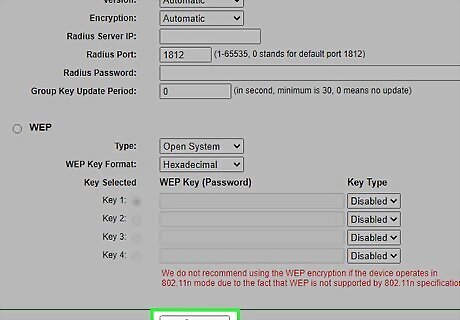
Save your changes. Locate the button to save the changes you have made in the router's user interface and click the button to save your changes. Your router may need to restart. You can later come back to your router’s portal to see who is connected to your network.
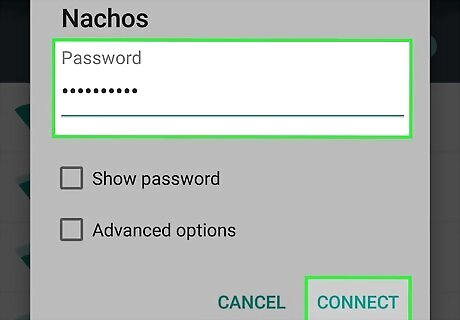
Connect other devices to your network. Use the following steps to connect other devices to your wireless network: Open the network settings menu or click or tap the wireless icon which usually resembles a dot with arching lines over it. Select your wireless SSID. Enter the wireless password. Click or tap Connect.
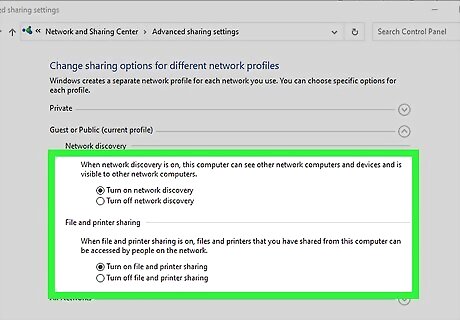
Share items on a local network (Windows). You can share files, folders, and even entire drives! You need to turn on network discovery first: Right-click the Wi-Fi icon in the system tray. Select Network & Internet settings. Windows 10: Click Network and Sharing Center on the Status page. Click Change advanced sharing settings. Toggle on Network discovery and File and printer sharing. Windows 11: Click Advanced network settings, then Advanced sharing settings. Toggle on Network discovery and File and printer sharing.
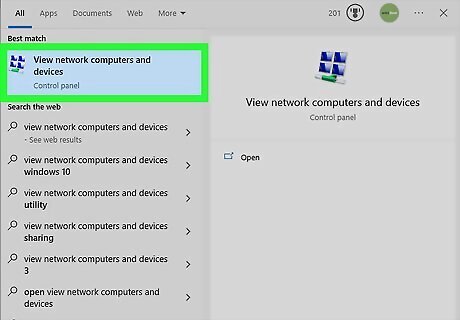
Access shared items (Windows). To find files and drives that have been shared on a local network on a Windows computer, follow these steps: Press Windows Key + S to open Windows search. Search for “View network computers and devices”. Click “View network computers and devices”. Double-click the computer/device you’re going to access. Navigate to the shared item you’re looking for.
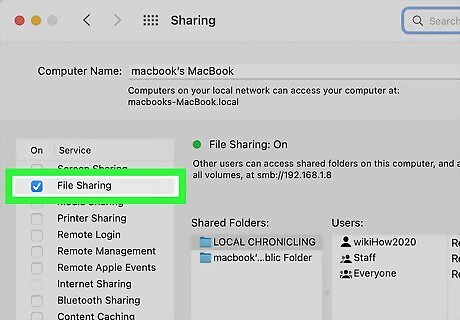
Share items on a local network (macOS). Follow these steps to share files, folders, and drives on a Mac by turning on file sharing: Go to Apple menu > System Settings in the menu bar. Select the General tab in the sidebar. Click Sharing in the right side menu. Toggle on “File Sharing”. Click the info button to the right to add specific items to share. Note: The Public folder for each user is shared automatically.
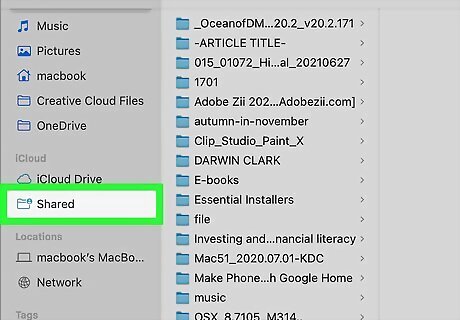
Access shared items (macOS). To find files and drives that have been shared on a local network on a Mac computer, follow these steps: Open a new Finder window. Click Shared Folders in the sidebar list. Locate the shared item that you want to access.
Creating an Ad-hoc Network In Windows 10
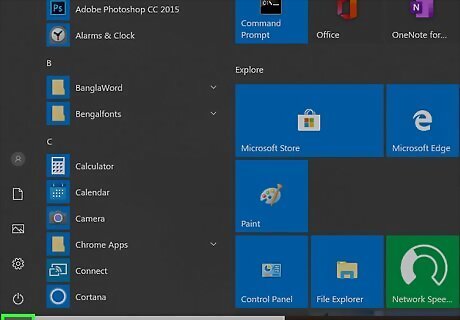
Click the Start icon Windows Start. It's the icon with the Windows logo, it's in the lower-right corner of the taskbar. This displays the Windows Start menu.
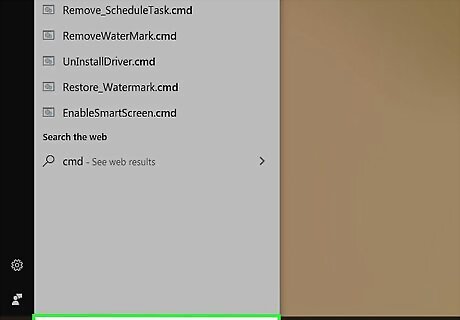
Type cmd. This displays the Command Prompt in the Windows Start menu.
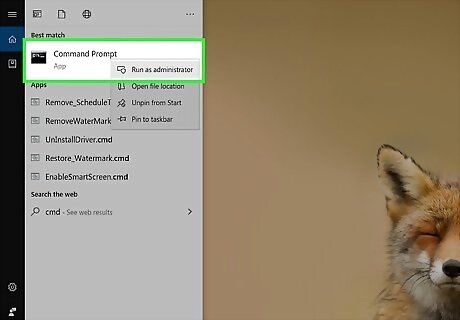
Right-click Command Prompt and click Run as Administrator. This opens the Command Prompt as an administrator. You must be logged in to Windows with an account that has administrative privileges to run Command Prompt as an administrator. If asked if you want to allow Command Prompt to make changes to your system, click Yes.
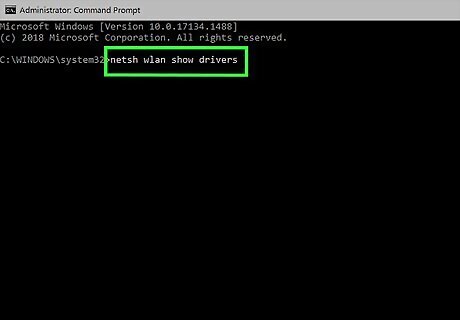
Type netsh wlan show drivers and press ↵ Enter. This shows your network driver properties.
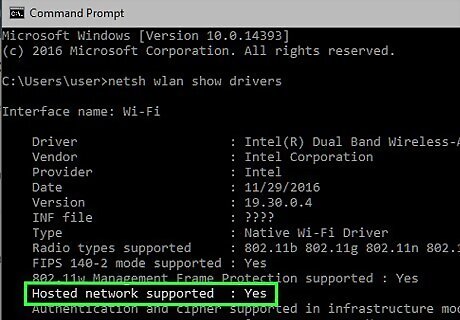
Check the status next to "Hosted network supported". If it says "Yes", continue to the next step. If it says "No", try update your wireless network adapters. Enter the previous command once again in Command Prompt. If it still says "No" next to "Hosted network supported", your network adapter doesn't support ad-hoc networking.
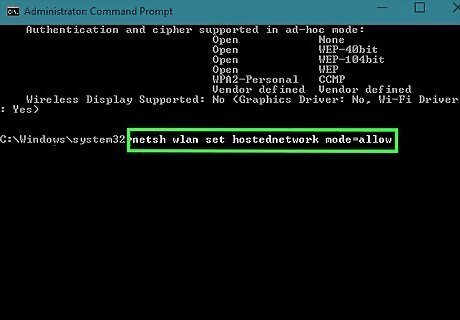
Type netsh wlan set hostednetwork mode=allow. This is the start of the command to create an ad-hoc wireless network. Don't press "Enter" just yet. You still need to add the network name and password to the command.
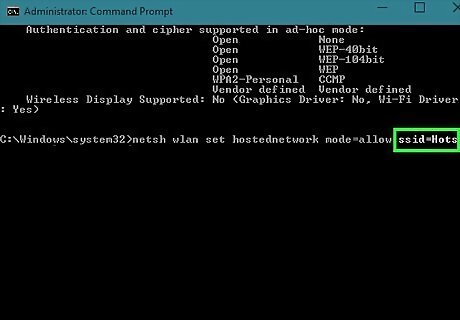
Type ssid= followed by a name for the network. This creates a name for your ad-hoc network.
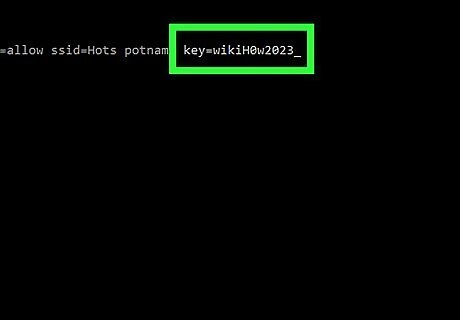
TYpe key= followed by the desired password. This creates a password that other users need in order to connect to the ad-hoc network. If doesn't accept your password, try deleting the equals (=) sign.
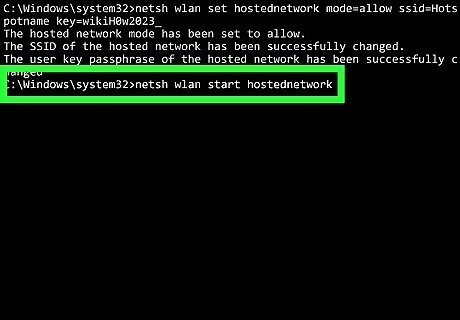
Type netsh wlan start hostednetwork and press ↵ Enter. This starts the ad-hoc network. As of now, the network may not appear when you search for a nearby network, but you can still enter the network name and password to connect to the network manually.
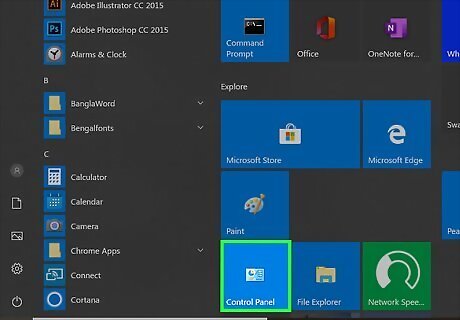
Open the Control Panel. Use the following steps to open the Control Panel: Click the Windows Start icon. Type "Control Panel". Click the Control Panel icon.
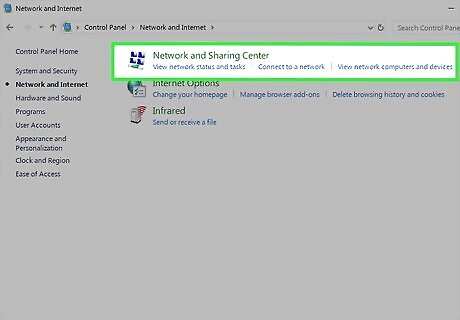
Navigate to the Network and Sharing Center. Use the following steps to navigate the network and sharing center: Click Network and internet. Click Network and Sharing Center.
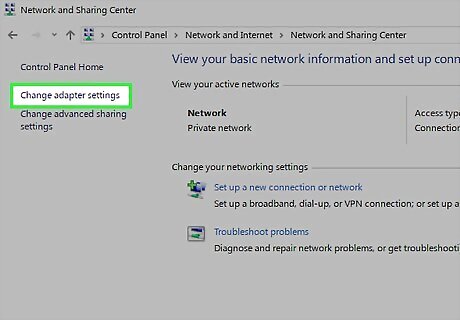
Click Change adapter settings. It's in the menu bar to the left.
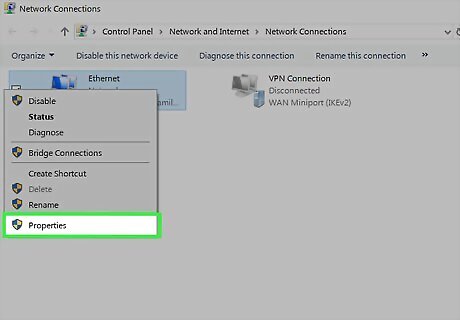
Right-click your ad-hoc network and click Properties. This opens the properties menu.
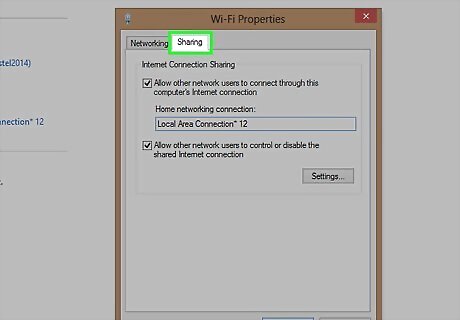
Click the Sharing tab. It's the second tab at the top of the Sharing menu.
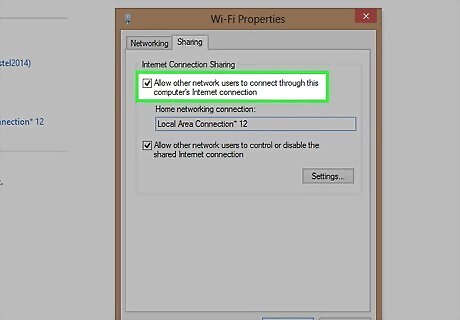
Click the checkbox next to "Allow other network users to connect through this computer’s Internet connection". It's the first option at the top of the Sharing menu.
Creating an Ad-hoc Network on Mac
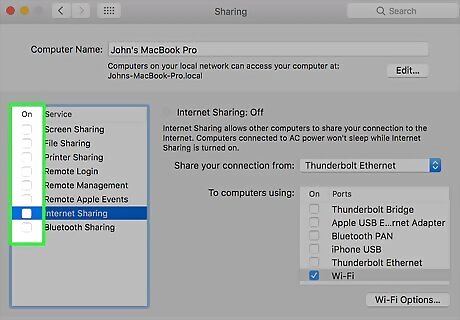
Turn off all sharing capabilities. As of the release of macOS 10.10, there is no longer an option to create a password for an ad-hoc network. It's recommended that you disable all sharing capabilities on your Mac and turn on the macOS Firewall before creating an ad-hoc network. Use the following steps to disable sharing: On macOS Monterey and earlier: Click the Apple icon in the menu bar. Click System Preferences. Click the Sharing icon. Uncheck any checked checkboxes in the Sharing services menu on the left. On macOS Ventura and later: Click the Apple icon in the menu bar. Click System Settings. Click General. This is in the sidebar. Click Sharing. Uncheck any checked checkboxes in the Sharing services menu.
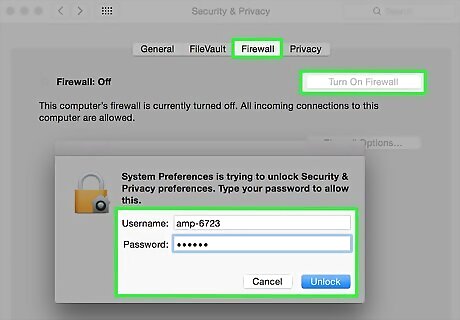
Turn on the macOS Firewall. Use the following steps to enable the macOS firewall: On macOS Monterey and earlier: Click the Apple icon in the menu bar. Click System Preferences. Click Security & Privacy. Click the Firewall tab. Click the lock icon in the lower-left corner. Enter your Mac password. Click Turn On Firewall. On macOS Ventura and later: Click the Apple icon in the menu bar. Click System Settings. Click Network. This option is in the sidebar. Click Firewall. Turn on the Firewall in the Firewall menu.

Click the WiFi icon located Mac Wifi. It's in the upper-right corner of the menu bar.
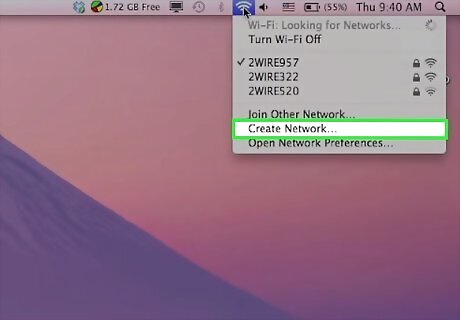
Click Create Network. It's near the bottom of the pull-down menu.
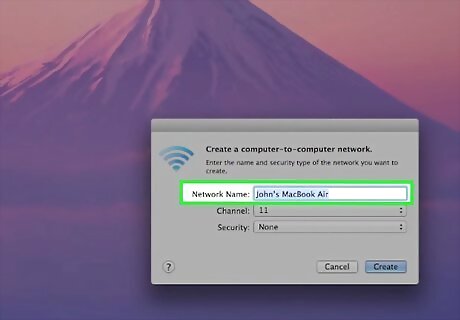
Enter a network name. Use the field next to "Network Name" to create a name for your network.
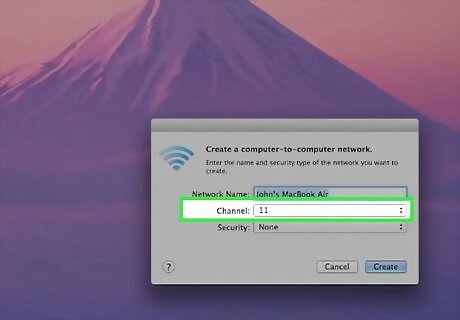
Select a channel. Use the drop-down menu next to "Channel" to select a channel. Channels 1, 6, and 11 are good choices because they don't typically overlap with other channels.
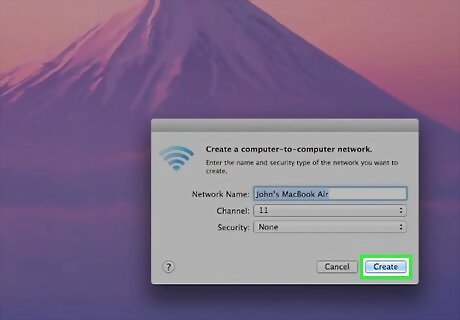
Click Create. This creates a new ad-hoc network. You can connect to your ad-hoc network on other devices by selecting the network name in the network connection settings.




















Comments
0 comment